Kinesiology Taping
Table of Contents
What is Kinesiology taping?
Kinesiology tape, also known as Kinesio tape, is a form of sports medicine that is worn to help support muscles and joints. It is made of cotton with an acrylic adhesive that sticks to the skin without causing discomfort. The tape is designed to prevent muscles from overworking, and it can be used to treat sports injuries like shin splints, rotator cuff tears, tennis elbow, and plantar fasciitis.
Introduction:
- Kinesiology taping (KT) is a therapeutic tool and has become increasingly popular within the sporting arena. Taping has been used for a long time for the prevention and treatment of sporting injuries. KT is not only used for sporting injuries but for a variety of other conditions. It was developed by Japanese Chiropractor Dr. Kenzo Kase in the 1970s with the intention to alleviate pain and improve the healing in soft tissues. There are many proposed benefits to KT, including proprioceptive facilitation; reduced muscle fatigue; muscle facilitation; reduced delayed-onset muscle soreness; pain inhibition; enhanced healing, such as reduced edema, and improvement of lymphatic drainage and blood flow.
What is the Kinesio taping method?
- Kinesiology tape is a thin, stretchy, elastic cotton strip with an acrylic adhesive. Therapeutic kinesiology tape can benefit a wide variety of musculoskeletal and sports injuries, plus inflammatory conditions.
- Kinesiology tape is almost identical to human skin in both thickness and elasticity, which allows Kinesio tape to be worn without binding, constricting, or restriction of your movement.
- Kinesiology tape is an that is used for treating athletic injuries and a variety of physical disorders. For the first decade after its introduction practitioners in Japan were the main users of the therapeutic kinesiology tape. By 1988 the tape had been adopted by Japanese Olympic and professional athletes before spreading across the work.
- You would have noticed that more and more professional athletes use kinesiology taping to improve their sporting performance, prevent injury and allow them to return to sports quicker.
MORE ABOUT KINESIO TAPING:
- KT is manufactured pre-stretched by 15-25% as it is applied to the backing paper. It is characterized by the ability to stretch to 120-140% of its original length and, following application, recoil back towards its unstretched length. KT purportedly mimics the physical qualities of the skin as it is believed to be the same weight and thickness of the epidermis along with its inherent elastic properties. It is comprised of polymer elastic wrapped in 100% cotton fibres, which allows for evaporation of moisture. The glue is heat-activated and is applied in a wave-like pattern to mimic the qualities of the fingerprint on the fingertip. KT is both waterproof and breathable and it can be worn during exercise, showering, and even swimming. It dries quickly and seldom causes skin irritation, however; if skin irritation does occur, advise a patient to remove the tape immediately and wash the area with warm soapy water to remove any residual adhesive. When properly applied, it will last up to 3-5 days.
THEORY OF KINESIO TAPING:
- The type of application theoretically determines the physiological outcome: for example, KT is applied unstretched over manually stretched skin above the injured muscle. This type of application will cause the skin to form convolutions that lift the skin. Theories suggest that these convolutions encourage the regeneration of injured tissue by increasing interstitial space and alleviating interstitial pressures which occur from swelling post-injury. This decrease in pressure also decompresses subcutaneous nociceptors, leading to decreased pain. It is also theorized that lifting the skin detaches filaments that attach the skin to endothelial cells of the lymphatic and capillary beds. This is proposed to create channels that allows for lymph to drain, thus reducing swelling and allowing increased blood flow to the area. The evidence for these theories is still in its infancy and requires extensive research.
HOW TO APPLY KINESIOLOGY TAP?
- There is an art to the application of kinesiology tape. You should seek the advice of a physiotherapist trained in the application of kinesiology tape for the most effective techniques and what Kinesio tape is best for you.
> Your Skin Preparation :
– Skin should be dry and free of any lotions, liniments, etc. Clean with soap and water or rubbing alcohol. Ensure your skin is dry before applying. Remove excessive hair.
> Preparing Your Kinesiology Tape :
– If using a roll of kinesiology tape round every corner when cutting to prevent edges from peeling prematurely.
* Avoid touching the adhesive side of the tape after removing the backing.
1. Apply anchor end (no tension)
2. Apply therapeutic tension (as instructed by your physiotherapist).
3. Apply anchor end (no tension).
Anchor points must be in contact with the skin. Kinesiology tape does not stick to other tapes.
> Wearing Kinesiology Tape :
– Wait at a minimum of 1 hour before wet or sweaty activities. To dry tape after exercising, swimming, or showering, pat your Kinesio tape gently with a towel.
BASICS PRINCIPLE OF APPLICATION:
- Ensure to thoroughly assess the patient in order to identify the most appropriate application
- Do NOT apply tape to any area of skin that is damaged by: scrapes; cuts; burns; sunburn or any type of skin rash/irritation
- The skin should be free of oils and lotion prior to application
- If body hair is limiting adhesion you may need to trim or shave the area
- Do NOT apply with excess tension (as with zinc oxide application)
- If a patient has been exercising, ensure perspiration has completely stopped before application
- If you are using a roll of tape, measure and cut carefully
- Round all the edges of the tape to prevent premature peeling
- Avoid touching the adhesive side of the tape after removing the backing as this may decrease the adhesive strength on the skin
- Once the tape is applied, activate the heat-sensitive glue by rubbing up and down the surface of the tape
INDICATION:
1-Joint Pain { Arthritis, bursitis, lupus, degenerative joints, poorly aligned joints, joint instability }
2-Muscle Pain { Torn muscles, pulled/strained muscles, tight muscles, fibromyalgia, muscle spasms, muscle cramps, calf strain, pulled hamstring, groin strain, strained gluteals, abdominal strain }
3-Soft Tissue Injuries { Tendinitis, tennis elbow (lateral epicondylitis), golfers elbow (medial epicondylitis), patellar tendinitis, Achilles tendinitis, whiplash, back strain, neck strain, rotator cuff injuries, iliotibial band syndrome (ITB) }
4-Joint Injuries {Joint sprains, dislocated joints, sprained ankle, sprained knee, sprained wrist, sprained elbow, degenerated meniscus, torn cartilage, unstable joints, joint hypermobility }
5-Overuse Injuries Carpal tunnel, repetitive stress syndrome, shin splints, Iliotibial Band Syndrome, tension headache
6-Swelling and Edema Lymphedema, swollen joints, edema, lymphatic congestion, chronic joint or muscle inflammation
7-Postural Problems Poor posture, round shoulders, scapular instability, muscle weakness, muscle imbalance, poor muscle tone, hypotonia
8-Recovery from Surgery Athletic injury surgery, reconstructive surgery, joint replacement surgery, meniscus repair, ligament surgery, tendon surgery, lymph node removal
9-Bruising Bruising following injuries or surgery, contusions
10-Foot Pain Plantar fasciitis, fallen arches
CONTRAINDICATIONS & PRECAUTIONS:
- Malignancy
- Infection, cellulitis
- Open wound
- DVT (Deep vein Thrombosis)
PRECAUTIONS OF KT TAPE:
- Diabetes
- Congestive heart failure
- Fracture
DIFFERENT TYPES OF APPLICATIONS:
- KT can be applied in the shape of a ‘Y’, ‘I’, ‘X’, ‘Fan’, ‘Web’ or ‘Donut’. The shape selection depends on the size of the affected muscle and the result you are trying to achieve.
> ‘Y’ shape tape application is generally used to:
Y-Strip is an I strip with a longitudinal cut extending from one end and a solid anchor end or base. The separated ends are called tails and are generally positioned around the borders of a muscle or joint. Dr. Kenzo Kaze, a creator of Kinesio Tape, likens it to “taping your hands around the muscle.”
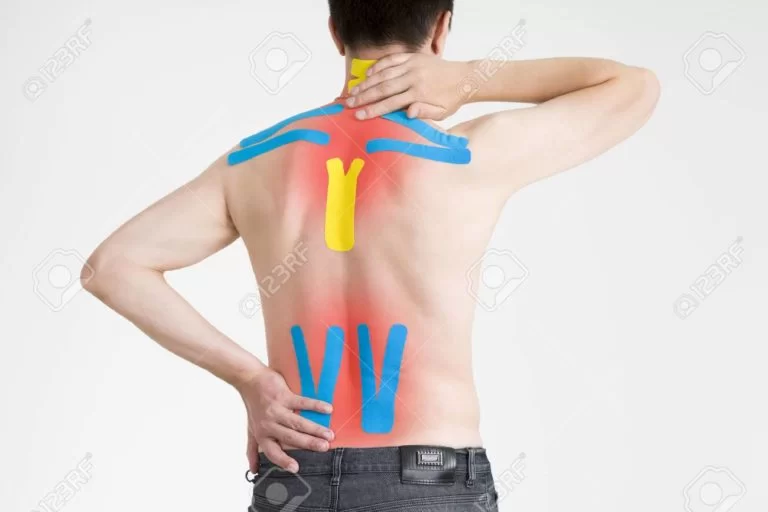
Y-Strips can be used for:
– relieving pain and inflammation
– activating weak or injured muscles to contract more effectively
– inhibiting an injured or overused muscle to facilitate rest and recovery
– providing structural support around a weak or injured area
– Surround the target muscle
– Inhibit or facilitate muscle stimuli
– Should be 2 inches longer than the target muscle
* Y-Strip Application Technique :
Put the area being taped into a position of maximal stretch. Remove the backing from the base of the Y and apply it just above or below the belly of the muscle. Remove the backing paper from one tail, then apply the tape in a curved shape around the border of the muscle. Repeat with the other tail along the other border of the muscle. For pain relief, the tape should be applied with no stretch, while mechanical correction techniques require a 50-70% stretch.
> ‘I’ tape application is generally used for:
– Acute injuries in place of ‘Y’ tape
– Oedema and pain (primary purpose)
– Alignment correction
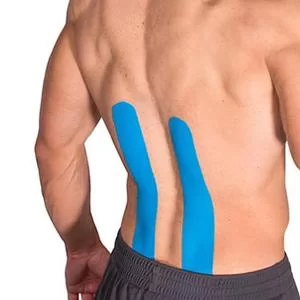
- The most basic building block of kinesiology taping, I-Strips are single, solid strips of tape. The length and width can vary, depending on the size of the area being taped. I strips are applied directly over an injured or painful area or along the belly of a muscle.* Structural Support for Injured Muscles, Tendons, Ligaments, and Joints
- A structural support application protects healing tissues and helps prevent harmful ranges of motion. It can also be used to improve posture and/or movement dynamics. To apply an I-Strip, tear the backing paper 2-3″ from one end of the tape to create an anchor end. Apply this end first, then contract the muscles in the affected area. Peel the backing from the rest of the strip except for the end you are holding. Apply about a 50% stretch to the tape and smooth it onto the skin. To prevent skin irritation, apply the final 2-3″ with zero stretches.
* Spot Pain Relief
For a hot spot or area of localized pain, this decompressive technique can bring rapid relief. Cut a short strip of tape, slightly longer than the area being treated. Fold the strip in half and tear the backing paper across the middle of the tape. Peel the backing paper back towards both ends. Holding each end of the tape, stretch the center portion approximately 75% and lay the tape directly over the painful area. Remove the paper from each end of the strip and lay the ends down with zero stretches. If necessary, you can apply another strip perpendicularly to the first strip.
> ‘X’ tape application is generally used when:

- An X strip is a solid strip of tape with longitudinal cuts extending from both ends toward a solid center area that is generally 2-3″ long. This creates tails on both ends of the tape, that when spread and applied, resemble the letter X. The X configuration is used for:
* Point Pain Applications
Tear the backing paper where each tail joins the center, then remove the backing from the center area. holding the ends of the tape, stretch the center 70-80%, and apply it directly over the focal point of the painful area. Position the injured area in a position of maximal stretch. One at a time, remove the backing paper from each tail and apply it with zero stretches around the adjoining muscle borders.
* More Complex Structural Support
Because they have tails at both ends, X strips can be applied to muscles that cross 2 joints or to muscles with more than one muscle belly, i.e., rhomboid major and rhomboid minor.
> ‘Fan/Web’ tape application is used for:
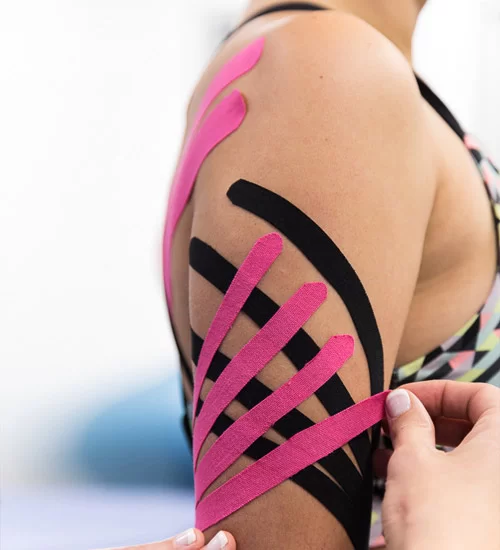
- Edema strips provide dramatic proof of the power of kinesiology taping, as they have the ability to effectively relieve both swelling and bruising. Designed with a solid anchor end connected to 4 or 5 narrow tails, edema strips are sometimes called fan strips because they are applied in a fan-like pattern over an injured area. The lifting action of the tape allows the lymphatic fluid to drain away from a traumatized area, relieving swelling and bruising in a fraction of the typical time.
* How to Apply Edema Strips
With the injured area elevated and in a stretched position, apply the base of one edema strip to one side and slightly above or below the swelling. One at a time,
remove the backing from the tails and apply them with a slight stretch in a fan shape over the injured area. Repeat the process with a second edema strip, applying the anchor on the opposite side and criss-crossing the tails over the first application
> ‘Donut’ tape application is generally used for:
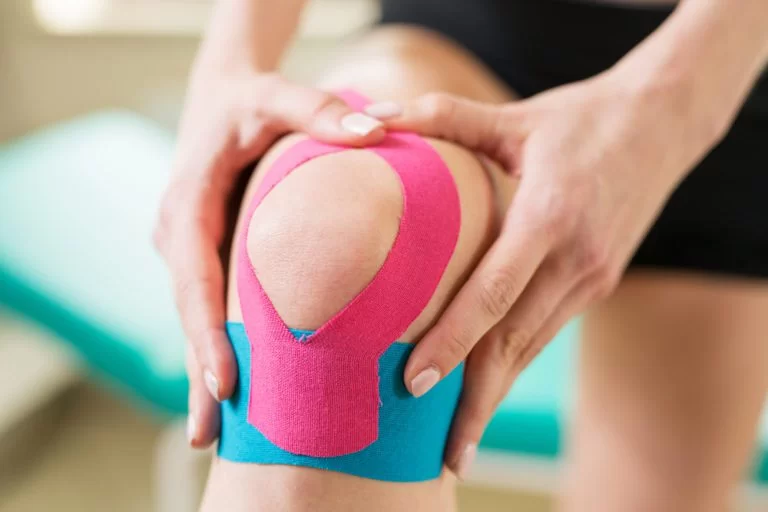
- Oedema (use overlapping strips and the center is cut out over the area of focus)
- Achieved by taking a strip of I tape, folding it in half, and cutting down the folded center instead of from the ends. When unfolded, there will be a large ‘hole’ in the middle yet the ends are all still joined – like a donut. This technique is often seen on the knee, when the kneecap occupies the donut’s hole and the donut’s sides are taped around it.
INSERTION TO ORIGIN:
– Used to inhibit overused or stretched muscles
– Light stretch used to achieve a goal
ORIGIN TO INSERTION:
– Used to facilitate weak or under-performing muscles
– Light to moderate stretch required
CLINICAL IMPLICATIONS:
– Level of evidence – weak
What does the evidence support?
– Increase ROM
– Increase in Function
– Decrease Oedema/Swelling
PROS :
– Some evidence proves theories
– Provides a treatment
– Applicable to multiple patient populations
– Feeling of treatment encourages movement
– Versatile
CONS:
– Small body of evidence to prove theories
– Expensive
– Requires practice
– Skin irritation
PATIENT CARE ADVICE:
– If the tape makes symptoms worse then take it off
– If the tape starts to come off then rub it to re-activate the tape adhesive
– Do NOT dry it with a hairdryer
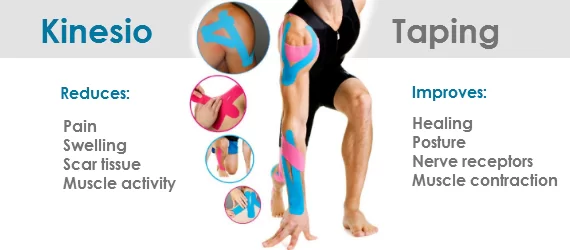


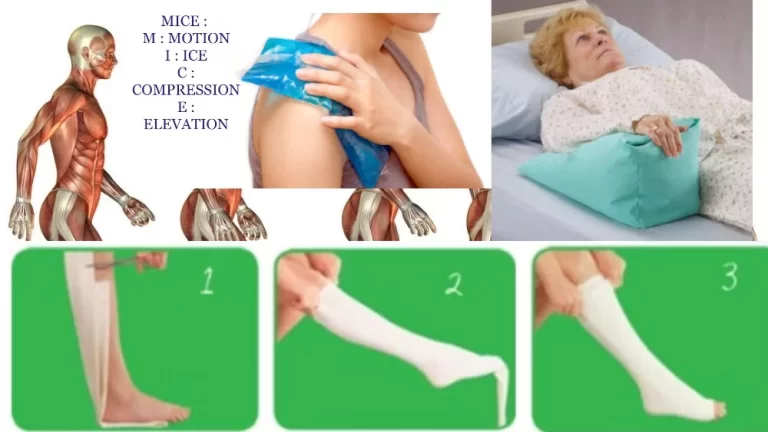

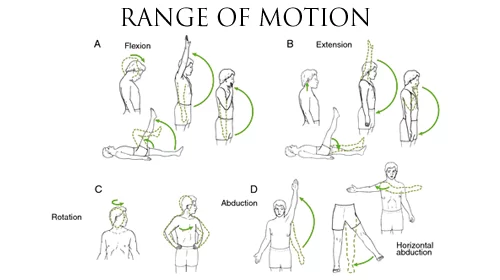
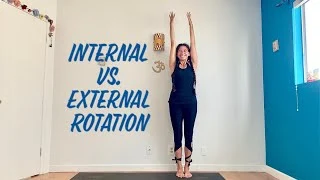

9 Comments